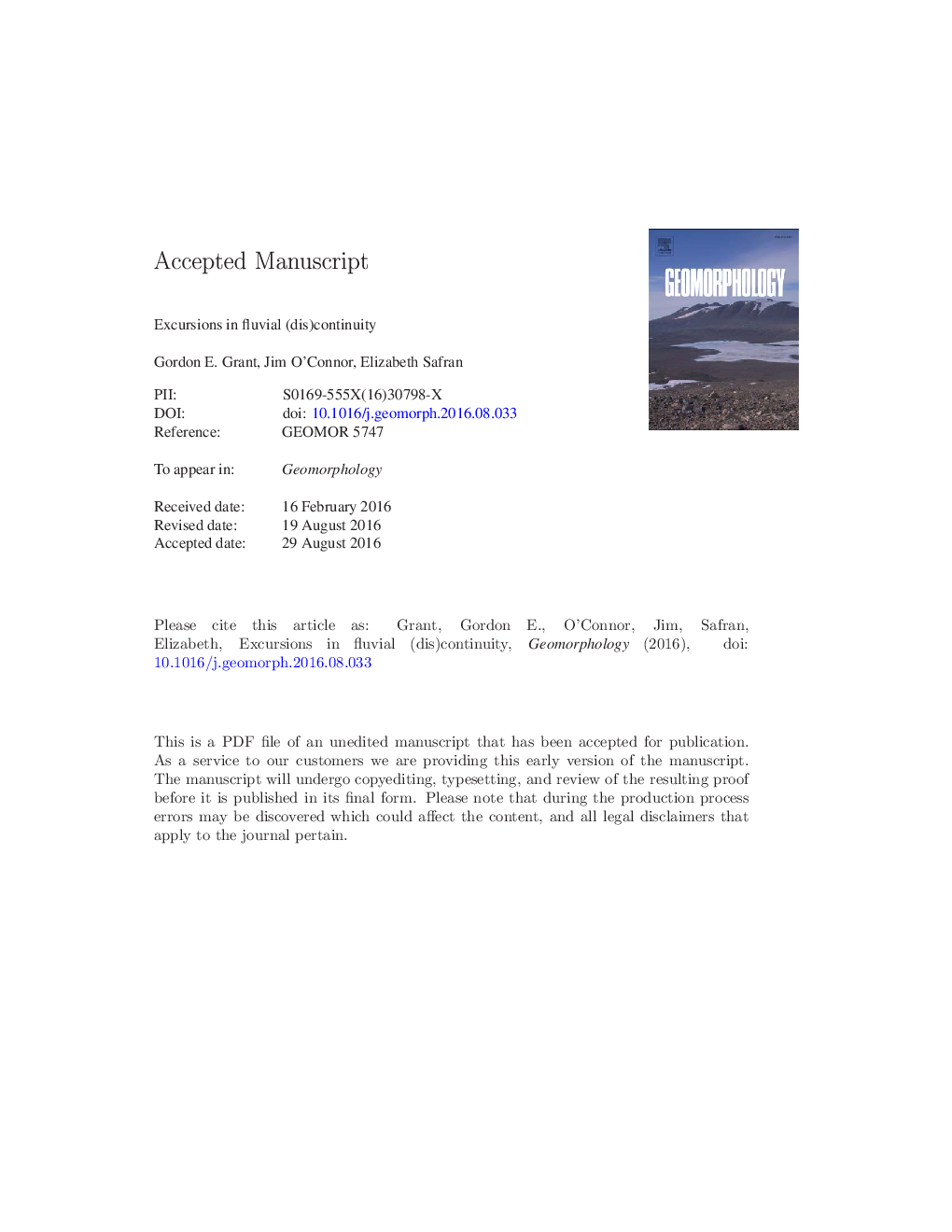| Article ID | Journal | Published Year | Pages | File Type |
|---|---|---|---|---|
| 5781142 | Geomorphology | 2017 | 27 Pages |
Abstract
In contrast the discontinuous view is a distinct though complementary conceptual framework that incorporates non-uniform, non-progressive, and non-equilibrium thinking into understanding geomorphic processes and landscapes. We distinguish and discuss examples of three different ways in which discontinuous thinking can be expressed: 1) discontinuous spatial arrangements or singular events; 2) specific process domains generally associated with thresholds, either intrinsic or extrinsic; and 3) physical dynamics or changes in state, again often threshold-linked. In moving beyond the continuous perspective, a fertile set of ideas comes into focus: thresholds, non-equilibrium states, heterogeneity, catastrophe. The range of phenomena that is thereby opened up to scientific exploration similarly expands: punctuated episodes of cutting and filling, discretization of landscapes into hierarchies of structure and control, the work of extreme events. Orderly and progressive evolution towards a steady or ideal state is replaced by chaotic episodes of disturbance and recovery. Recent developments in the field of geomorphology suggest that we may be on the cusp of a new paradigm that recognizes that both continuous and discontinuous processes and mechanisms play a role in fluvial processes and landscape evolution with neither holding sway over the other and both needed to see rivers as they are.
Related Topics
Physical Sciences and Engineering
Earth and Planetary Sciences
Earth-Surface Processes
Authors
Gordon E. Grant, Jim O'Connor, Elizabeth Safran,
